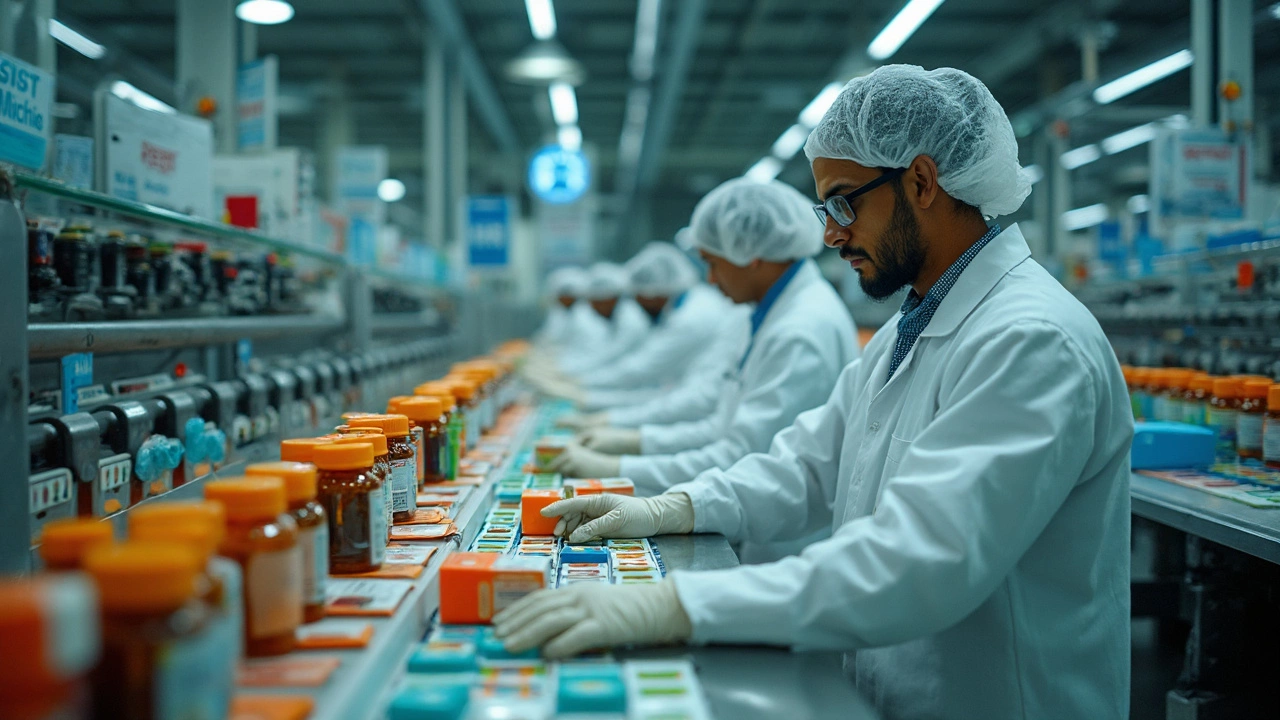- Exploring India's Textile Hub: Unveiling the World Capital Mar 26, 2025
- Who is the World's Largest Chemical Manufacturer? - 2025 Update Oct 21, 2025
- Gujarat Famous Cloth: The Story Behind India's Textile Powerhouse May 25, 2025
- India's Furniture Manufacturing Industry Set for Growth Dec 10, 2024
- Millionaires in Steel: Who Hit It Big in the Steel Industry? Jun 2, 2025
Pharma Manufacturers in India: Who's Who and What They Do
If you’re looking for a quick rundown of India’s pharma landscape, you’re in the right place. This tag page pulls together articles that break down the biggest drug makers, the reasons behind India’s low-cost medicines, and the latest growth trends. Think of it as a one‑stop shop for anyone who wants to understand the sector without reading a textbook.
Why India Became a Pharma Powerhouse
First off, the country has a massive talent pool of chemists, engineers, and biotech experts. Combine that with a regulatory framework that encourages generic drug production, and you get a recipe for cheap, high‑quality medicines. Low labor costs and a huge domestic market also let manufacturers scale up quickly. That’s why you often see Indian drugs priced dramatically lower than those from the US or Europe.
Government policies play a big role too. The Patent Act of 1970 allowed local firms to reverse‑engineer patented drugs, kick‑starting the generic industry. More recently, the Production‑Linked Incentive (PLI) scheme is pouring money into vaccine and biotech manufacturing, giving a fresh boost to R&D and export capacity.
Key Players and What They Produce
India’s pharma scene isn’t dominated by a single giant; it’s a mix of old‑school names and fast‑growing newcomers. Companies like Sun Pharma, Cipla, Dr. Reddy’s, and Lupin have been around for decades and export to over 150 countries. They specialize in everything from antibiotics and antiretrovirals to specialty oncology drugs.
On the rising side, firms such as Aurobindo and Natco are making waves in biotech and complex generics. They’re investing heavily in biologics, which are the next frontier for treating diseases like cancer and autoimmune disorders. If you skim the posts under this tag, you’ll find deep dives on each of these companies – their production capacity, export numbers, and recent R&D milestones.
Another trend worth noting is the surge in contract manufacturing. Small and medium‑sized enterprises (SMEs) are partnering with global pharma giants to produce active pharmaceutical ingredients (APIs) and finished dosage forms. This not only widens India’s export basket but also creates jobs across the supply chain.
What does all this mean for you? Whether you’re a buyer, an investor, or just curious, the tag page gives you practical insights: cost comparisons, quality certifications, and even tips on how to vet a supplier. You’ll also find articles on why Indian drugs are cheaper, the role of Indian pharma in global health emergencies, and the future outlook for biotech manufacturing.
Bottom line: India’s pharma manufacturers combine scale, cost advantage, and growing technical know‑how. The ecosystem is evolving fast, with new policies and technologies reshaping the game. Keep an eye on the latest posts here to stay ahead of the curve and make informed decisions about sourcing, investing, or learning more about this dynamic industry.
Where Does CVS Get Their Drugs From? Inside the Pharma Manufacturer Pipeline
- Aarav Sekhar
- Apr 27, 2025
Ever wondered where CVS gets the medicines you see on its shelves? This article looks behind the scenes into CVS’s global supply chain, focusing on the key role of India’s pharmaceutical manufacturers. Get clear answers on how CVS chooses suppliers, ensures safety, and what all of this means for your trust and wallet. You'll also pick up a few tips to make smarter choices next time you fill a prescription.
